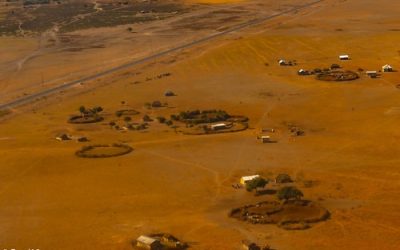Historical Background
The historical background of Ethiopia and Tanzania reveals rich and diverse narratives that have shaped the development of both nations. Ethiopia, known for its ancient civilization and unique heritage, possesses a history marked by legendary monarchs and periods of independence. Tanzania, meanwhile, has a history deeply rooted in indigenous cultures, colonial influences, and the struggle for independence. Understanding their historical contexts provides valuable insights into their respective societal structures, cultural identities, and regional significance.
Early Interactions and Colonial History
Historically, Ethiopia and Tanzania have distinct backgrounds that shape their modern identities. Ethiopia, recognized for its ancient civilization, has a long-standing history as one of Africa’s oldest nations, with archaeological evidence of early human settlements dating back thousands of years. It remained largely unaffected by European colonization, maintaining its sovereignty and cultural heritage. In contrast, Tanzania’s history was marked by the influence of various coastal kingdoms and extensive Arab trade routes, especially along the Swahili coast. The region was formally colonized by Germany in the late 19th century, later becoming a British protectorate after World War I.
Early interactions between Ethiopia and the territories that now comprise Tanzania were limited, primarily due to geographical distance and differing historical trajectories. Ethiopia’s diplomatic initiatives in the 20th century focused on maintaining its independence, notably resisting Italian colonization in the 1930s. Meanwhile, Tanzania’s colonial history under German and British rule involved the integration of diverse ethnic groups and the development of plantation economies. Despite their separate paths, both nations played significant roles in regional resistance against colonial powers and sought to forge stronger ties following their independence movements in the mid-20th century.
Post-Independence Relations
Historically, Ethiopia and Tanzania have maintained cordial relations rooted in their shared experience of anti-colonial struggles and Pan-African ideals. Ethiopia, with its ancient history and status as never colonized, played a significant role as a symbol of resistance and independence in Africa, inspiring neighboring nations including Tanzania. Tanzania, under Julius Nyerere, strongly supported liberation movements across Africa and fostered regional solidarity, further strengthening its relationship with Ethiopia. Post-independence, both countries have collaborated within regional organizations such as the Organization of African Unity (now the African Union) to promote peace, economic development, and unity across the continent. Their diplomatic ties have been characterized by mutual respect, shared interests in regional stability, and efforts to promote socio-economic progress, exemplifying their longstanding commitment to African solidarity and independence ethos.
Geographical and Demographical Overview
The geographical and demographical overview of Ethiopia and Tanzania provides important context for understanding their unique characteristics. Ethiopia, located in the Horn of Africa, features diverse landscapes ranging from highlands to semi-arid regions, with a population noted for its cultural diversity and rapid growth. Tanzania, situated in East Africa, is known for its expansive savannas, mountains, and the iconic Serengeti ecosystem, supported by a growing population that reflects the country’s vibrant cultural heritage. Exploring these aspects offers insight into the social and environmental factors shaping each nation.
Location and Topography
Ethiopia and Tanzania are two prominent countries in East Africa with distinct geographical and demographical characteristics. Understanding their location and topography offers insight into their diverse landscapes and populations.
- Geographical Location:
- Ethiopia is landlocked and situated in the Horn of Africa, bordered by Eritrea, Djibouti, Somalia, Kenya, South Sudan, and Sudan.
- Tanzania is located on the eastern coast of Africa, bordering the Indian Ocean, with neighbors including Kenya, Uganda, Rwanda, Burundi, the Democratic Republic of the Congo, Zambia, Malawi, and Mozambique.
- Topography:
- Ethiopia features rugged highlands, mountains such as the Simien and Bale ranges, and the Great Rift Valley, contributing to diverse climates and ecosystems.
- Tanzania’s landscape includes vast savannahs, the Serengeti ecosystem, Mount Kilimanjaro—the tallest peak in Africa—and numerous lakes like Lake Victoria and Lake Tanganyika.
Both countries boast rich geographical diversity, which influences their climate, biodiversity, and demographic distribution across urban and rural areas.
Population Statistics and Ethnic Composition
Ethiopia and Tanzania are two prominent countries in East Africa, each with unique geographical and demographic characteristics that shape their national identities. Ethiopia is landlocked and exhibits diverse terrains including highlands, mountains, and lowlands, while Tanzania boasts both coastal regions along the Indian Ocean and expansive inland plains and savannahs. The geographical differences influence their climates, agriculture, and settlement patterns.
In terms of population, Ethiopia is the second-most populous country in Africa, with over 120 million people, whereas Tanzania has a population of approximately 70 million. Both nations have experienced rapid population growth over recent decades, impacting social, economic, and infrastructural development.
Ethnically, Ethiopia is highly diverse, comprising numerous ethnic groups such as the Oromos, Amharas, Tigrayans, and Somali peoples, each with distinct languages and cultural traditions. Tanzania also features a variety of ethnic groups, including the Sukuma, Chagga, Haya, and Maasai, with Swahili and English serving as official languages. The diverse ethnic compositions in both countries contribute to their rich cultural tapestries while also presenting challenges in unity and governance.
Political and Administrative Systems
Political and administrative systems shape the governance and development of a country, influencing how laws are enacted, policies are implemented, and citizens’ needs are addressed. In the context of Ethiopia and Tanzania, understanding their distinct structures provides insight into their political stability, administrative efficiency, and overall approach to governance.
Governance Structures
Both Ethiopia and Tanzania have distinct political and administrative systems that shape their governance structures. Ethiopia operates under a federal parliamentary republic, characterized by a federal system with regional states enjoying a significant degree of autonomy. The Ethiopian People’s Revolutionary Democratic Front (EPRDF) historically played a central role in governance, now transitioning to a Federal Democratic Republic with an emphasis on ethnic federalism, which influences political organization and administrative divisions.
Tanzania, on the other hand, is a unitary republic with a centralized government structure. It has a multiparty political system, but the Chama Cha Mapinduzi (CCM) has dominated politics for decades. Tanzania’s governance emphasizes a strong central government that administers local authorities and regional councils, ensuring national policies are implemented uniformly across the country.
In summary, Ethiopia’s federal system promotes regional autonomy based on ethnic identities, while Tanzania’s centralized system emphasizes national unity through a unitary governance structure. Both countries face unique challenges and advantages stemming from their respective political frameworks, influencing their development trajectories and political stability.
Major Political Parties and Leadership
Both Ethiopia and Tanzania have unique political and administrative systems that shape their governance and leadership structures. Ethiopia operates as a federal parliamentary republic, with a complex multi-ethnic federal system designed to ensure representation of its diverse groups. The country’s political landscape is dominated by the Ethiopian People’s Revolutionary Democratic Front (EPRDF) and its successor, the Prosperity Party, which have played central roles in national politics. The leadership comprises elected officials at federal and regional levels, with the Prime Minister serving as the head of government.
Tanzania functions as a unitary republic with a centralized political framework, historically guided by the Chama Cha Mapinduzi (CCM) party, which has maintained dominance since independence. The country emphasizes a centralized form of governance, with the President serving as both head of state and government. Leadership in Tanzania is characterized by a focus on stability and continuity, with the President wielding significant executive authority. Both nations emphasize their political stability, but Ethiopia’s federal system contrasts with Tanzania’s more centralized approach, influencing their administrative operations and political dynamics.
Economic Overview
The economic overview of Ethiopia and Tanzania provides valuable insights into the dynamic growth and development of these two East African nations. Both countries have experienced significant changes in their economic landscapes, driven by diverse sectors such as agriculture, manufacturing, and services. Understanding their economic strengths, challenges, and opportunities offers a clearer picture of their positions within the regional and global economy.
Key Industries and Sectors
Ethiopia and Tanzania are two prominent East African nations with diverse economic landscapes. Ethiopia’s economy is primarily driven by agriculture, which employs a significant portion of the population, complemented by emerging sectors like manufacturing and services. The country has seen rapid growth due to large infrastructure projects, industrialization efforts, and investment in textiles and construction. Tanzania’s economy relies heavily on agriculture as well, with key industries including mining, tourism, and telecommunications. The nation benefits from its natural resources, such as gold and natural gas, and has a growing manufacturing sector focused on food processing and textiles. Both countries are striving to diversify their economies, but Ethiopia’s focus on industrial parks and infrastructure development distinguishes its economic strategy from Tanzania’s resource-driven approach. Overall, while both nations are experiencing economic growth, Ethiopia’s expansion is largely driven by industrialization projects, whereas Tanzania leverages its natural resources and tourism potential.
Economic Growth and Challenges
Ethiopia and Tanzania are two prominent East African nations with distinct economic landscapes. While both countries possess significant growth potential, they face unique challenges that influence their economic trajectories.
In terms of economic growth, Ethiopia has experienced rapid expansion in recent years, driven largely by investments in infrastructure, agriculture, and manufacturing sectors. Tanzania’s economy, on the other hand, is heavily reliant on agriculture and natural resources, with growth linked to its mineral, tourism, and agriculture industries. Both countries are working towards diversifying their economies to sustain long-term development.
However, they encounter several challenges. Ethiopia faces issues related to political stability, access to foreign investment, and dependence on agricultural productivity. Tanzania grapples with infrastructural deficits, limited industrialization, and vulnerabilities to commodity price fluctuations. Overcoming these hurdles is crucial for both nations to realize their full economic potential.
- Political stability and governance reforms are vital for attracting sustainable investment.
- Enhancement of infrastructure, including transportation and energy, is essential for economic diversification.
- Addressing socio-economic disparities can promote inclusive growth and social stability.
- Reducing reliance on primary commodities will help mitigate economic volatility.
- Strengthening regional trade integration with neighboring countries can boost economic resilience.
Languages and Cultural Heritage
Languages and cultural heritage serve as vital connections to a nation’s history and identity. Ethiopia and Tanzania, two diverse countries in Africa, boast rich linguistic traditions and vibrant cultural practices that reflect their unique histories. Exploring how language shapes cultural heritage in these nations reveals the deep-rooted traditions and diverse identities that continue to thrive across their communities.
Official Languages and Linguistic Diversity
Languages and cultural heritage play a vital role in shaping the identities of Ethiopia and Tanzania, showcasing their rich and diverse histories. Ethiopia is renowned for its linguistic diversity, with over 80 languages spoken across the country. Amharic is the official language and serves as the lingua franca, reflecting the nation’s historical and cultural legacy. In contrast, Tanzania recognizes Swahili as its official language, facilitating national unity and communication among its various ethnic groups. English is also widely used in both countries for government, education, and international affairs, emphasizing their colonial histories and ongoing global connections. The unique linguistic landscapes of Ethiopia and Tanzania highlight the importance of preserving linguistic diversity as a key aspect of cultural heritage, fostering a sense of identity and continuity amidst modern development.
Cultural Traditions and Heritage Sites
Both Ethiopia and Tanzania boast rich languages and cultural heritage that reflect their unique histories and identities. Ethiopia is renowned for its linguistic diversity, with over 80 languages spoken, including Amharic, Oromo, Tigrinya, and Somali, which are integral to the nation’s cultural fabric. The country’s cultural traditions are deeply rooted in ancient practices, religious festivals, music, dance, and traditional crafts that have been preserved for centuries. Ethiopia’s heritage sites, such as Lalibela’s rock-hewn churches and the ancient city of Aksum, symbolize its historical significance and spiritual legacy.
Tanzania also features a vibrant tapestry of languages, with Swahili and English serving as official languages alongside numerous indigenous dialects spoken across different ethnic groups. The country’s cultural traditions are diverse, encompassing traditional music, dance, art, and rituals that vary among its many tribes, such as the Maasai, Chaga, and Sukuma. Tanzania’s heritage sites, including the Serengeti National Park, Mount Kilimanjaro, and the historic Stone Town in Zanzibar, not only highlight its natural beauty but also its complex cultural history and coastal trade heritage.
While Ethiopia’s cultural heritage is characterized by its ancient Christian traditions and historic sites, Tanzania’s rich diversity lies in its tribal cultures and natural wonders. Both countries celebrate their unique identities through their languages, cultural practices, and preserved heritage sites, making them standout destinations for those interested in exploring Africa’s cultural and historical diversity.
International Relations and Regional Influence
International relations and regional influence play a crucial role in shaping the dynamics between neighboring countries. As nations like Ethiopia and Tanzania navigate their unique political, economic, and cultural landscapes, their interactions significantly impact regional stability and development. Understanding these relationships offers insight into the broader mechanisms of influence and cooperation within Africa.

Membership in Regional and Global Organizations
In the context of international relations and regional influence, Ethiopia and Tanzania play significant roles within their respective regions and on the global stage. Both countries are members of various regional and international organizations, which shape their diplomatic and strategic positions.
- Ethiopia is a member of the African Union, which enhances its influence in continental politics and economic integration.
- Tanzania is also part of the African Union and has historically promoted regional stability and development through its involvement.
- Both countries participate in the East African Community, with Ethiopia showing recent interest despite not being a full member, while Tanzania is a founding member, strengthening regional cooperation.
- On the global level, Ethiopia is a member of the United Nations and the Common Fund for Commodities, actively engaging in international diplomacy.
- Tanzania maintains memberships with the United Nations and the World Trade Organization, aiming to bolster its economic growth and diplomatic relations.
Diplomatic and Trade Relations with Neighboring Countries
Ethiopia and Tanzania, as neighboring nations, maintain evolving diplomatic and trade relationships that are vital for regional stability in East Africa. Both countries engage in diplomatic dialogues to foster cooperation on issues such as border security, economic development, and regional integration through organizations like the East African Community. Their trade relations include the exchange of agricultural products, manufactured goods, and natural resources, which contribute to their economic growth. Despite geographical and cultural differences, Ethiopia and Tanzania seek to strengthen their regional influence through collaborative initiatives, promoting peace, stability, and mutual prosperity in the region.
Social and Developmental Indicators
Social and developmental indicators are vital measures that help assess the overall well-being and progress of a country. When comparing Ethiopia and Tanzania, these indicators provide valuable insights into their social infrastructure, health, education, and economic development. Understanding these differences highlights each country’s strengths and challenges in fostering sustainable growth and improving the quality of life for their populations.
Education and Literacy Rates
When comparing Ethiopia and Tanzania, both countries exhibit notable differences in their social and developmental indicators, as well as education and literacy rates. Ethiopia has made significant progress in expanding access to education, with literacy rates increasing over recent years, although they still lag behind Tanzania in some regions. Tanzania, on the other hand, has achieved higher literacy levels nationally, supported by consistent government initiatives aimed at universal primary education. Social indicators such as healthcare access and poverty reduction also vary, with Tanzania generally showing more stable improvements. However, both nations face challenges related to rural-urban disparities and ensuring equitable development across all communities, which are critical for their long-term social progress.
Health Systems and Major Health Challenges
Both Ethiopia and Tanzania face unique social and developmental indicators that influence their health systems and overall health challenges. Ethiopia has seen significant improvements in literacy rates and access to clean water, but still struggles with high maternal and child mortality rates. Tanzania has made progress in reducing infectious diseases and increasing healthcare access, yet it continues to face challenges related to malnutrition and health infrastructure deficiencies. These social factors directly impact the development of health systems, with Ethiopia focusing on expanding primary healthcare services and Tanzania working to strengthen disease prevention programs. Major health challenges for both countries include infectious diseases such as HIV/AIDS, malaria, and tuberculosis, alongside emerging issues like non-communicable diseases and nutritional deficiencies. Addressing these health concerns requires targeted interventions that consider their social and developmental contexts, aiming to improve health outcomes and sustainable development across both nations.
Tourism and Natural Attractions
Tourism and natural attractions play a vital role in showcasing the unique beauty and cultural richness of countries around the world. Ethiopia and Tanzania are two iconic destinations in Africa, each offering a diverse range of awe-inspiring landscapes and heritage sites. While Ethiopia boasts ancient archaeological sites and vibrant festivals, Tanzania is famous for its stunning safaris and breathtaking natural parks. Exploring these two nations reveals a wealth of adventures and scenic wonders that attract travelers from all over the globe.
Popular Tourist Destinations
Both Ethiopia and Tanzania are renowned for their rich natural attractions and vibrant tourism industries, making them popular destinations for travelers seeking diverse experiences. Ethiopia offers stunning landscapes such as the Simien Mountains and the Danakil Depression, as well as historical sites like Lalibela’s rock-hewn churches and the ancient city of Axum. Its unique blend of natural beauty and cultural heritage makes it a compelling destination for adventure and history enthusiasts. Tanzania, on the other hand, is world-famous for its safaris and wildlife safaris in the Serengeti and Ngorongoro Crater, where visitors can witness the Great Migration and a variety of wildlife in their natural habitat. Additionally, Mount Kilimanjaro provides an iconic climbing experience for trekkers from around the globe. Both countries boast remarkable natural attractions, but Ethiopia tends to appeal more to history and culture buffs, while Tanzania attracts those passionate about wildlife and outdoor adventure.
Natural Resources and Conservation Efforts
Both Ethiopia and Tanzania are renowned for their rich natural attractions and diverse ecosystems, making them popular tourist destinations. Ethiopia boasts stunning highlands, ancient archaeological sites like Lalibela, and the Simien Mountains, which attract hikers and history enthusiasts alike. Tanzania, on the other hand, is famous for its incredible Serengeti National Park, Mount Kilimanjaro, and the Ngorongoro Crater, offering unique wildlife safaris and mountain climbing experiences.
Natural resources in both countries are abundant, including minerals, fertile land, and water resources, which are vital for their economies. Ethiopia has significant deposits of gold, platinum, and potash, while Tanzania’s natural treasures include tanzanite, one of the world’s rarest gemstones, alongside substantial gold and diamond deposits. These resources, however, require careful management to prevent depletion and ensure sustainable development.
Conservation efforts in Ethiopia and Tanzania are crucial for maintaining their natural beauty and biodiversity. Tanzania has established numerous national parks and protected areas to conserve its diverse wildlife and flora, promoting eco-tourism as a sustainable economic activity. Ethiopia similarly emphasizes conservation through national parks like Bale Mountains and Simien Mountains, focusing on protecting endangered species and preserving cultural landscapes. Both countries face challenges such as habitat destruction and poaching, but ongoing initiatives aim to balance resource utilization with environmental sustainability.





0 Comments